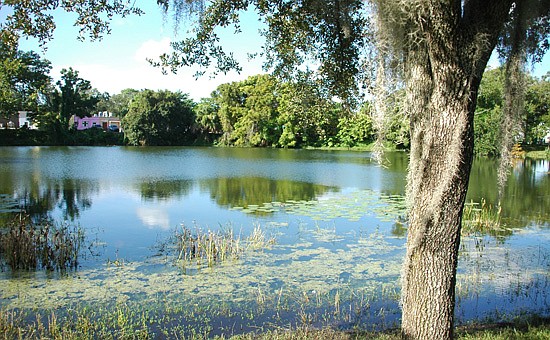- April 28, 2024
-
-
Loading

Loading

Jeremy Bush had just returned to his suburban Tampa home from work. The time was around 10 p.m. when he walked to his brother Jeff’s bedroom and spoke to him through the closed door, telling him he wouldn’t be working that day at his second job. Jeff responded back with an “OK,” and continued to lie in bed trying to sleep.
Bush went back to his own room, but heard a sudden crash just moments later that sounded like a car coming through the house. He heard his brother screaming, and rushed to his room while Jeremy’s wife turned on the bedroom light.
All that was left in the room was a hole in the floor, and the mattress his brother slept on.
Bush slid down into the 15-foot deep hole after his brother and started to dig with his hands, calling to his wife to get a shovel. He continued to dig, but there no sign of his brother. He could have sworn he heard Jeff calling his name.
An hour and a half drive from the sinkhole that swallowed Jeff Bush in his sleep in March, a team of University of Central Florida professors is conducting research that could lead to the ability to predict sinkholes before they happen.
UCF professors Dr. Manoj Chopra, Dr. Hae-Bum Yun, Dr. Dingbao Wang and Dr. BooHyun Nam are working together to collect data on when and where sinkholes occur in Florida, as well as what triggers the sinkholes to begin with.
By monitoring these numbers and factors, the team hopes to reach their ultimate goal of sinkhole prediction.
“It damages the infrastructure and also human life, so we definitely understand the sinkhole issue here in Florida, especially Central Florida,” Nam said.
The research continues in the wake of another sinkhole that struck just minutes away from Walt Disney World resort earlier this month. A three-story building at the Summer Bay Resort in Clermont sank and collapsed into a 60-foot-wide hole that suddenly opened in the ground.
“There was no sign whatsoever on the surface, and then suddenly, because there was a cavity underneath, the roof of the cavity collapsed,” Chopra said.
Nam explained that there are different kinds of sinkholes, with the most dangerous being a “cover collapse.” Areas with clay-like soil collect ground water over many years, building up weight beneath the rock surface. Rainwater that manages to trickle down through the soil and get to the limestone below slowly eats it away due to the carbonic acid it contains. Over hundreds of years, a cavity begins to form while the clay layer above stays intact, until a change in the groundwater pressure due to heavy rain or welling causes the top layer to collapse.
Central Florida’s thick soil makes the area a prime location for these types of sinkholes. Nam said these are the most dangerous because of their unpredictability.
“The reason people are very scared is because no one expects it,” Nam said. “Nobody can predict it.”
Chopra said that he estimates Central Florida to have at least 100 sinkholes every year, often hidden from public view in rural areas.
One of the largest sinkholes in the state of Florida happened in Winter Park in 1981. Directly along Denning Drive, the sinkhole slowly opened up and swallowed a house, a swimming pool and several Porsches from a nearby car dealership. By the time it stopped expanding, it had reached 350-feet-wide and 125-feet-deep.
The cavity that swallowed a city block now sits as a lake at the southeast corner of Martin Luther King Jr. Park.
Part of Nam’s research involves finding out where these cavities are below the surface, which could help people become more aware of the potential threat of a sinkhole, and allow scientists to categorize and rank areas by how dangerous they are, Nam said.
Chopra’s research focuses on trying to find a correlation between groundwater levels below and a potential sinkhole.
“If we notice, for example, that there’s a sudden drop in the water table level, is that an indication for a sinkhole maybe opening up in the future?” Chopra said.
The research piqued the interest of Jim Rothrock, principal engineer and vice president of Windermere Engineering Services Inc., an engineering company that provides forensic evaluation for potential sinkholes.
“If you were able to get very specific and know at what location and at what time a sinkhole could potentially occur, you’d have the opportunity to take preventive action or eliminate the sinkhole through restorative work,” Rothrock said.
“On the other hand, if you’re dealing with raw land, you could simply avoid developing that area.”
The team’s research is currently funded by an in-house grant at UCF, but the group hopes to eventually receive federal funding, which will allow them to take on more detailed research.
Next year, Nam plans to use ground-penetrating radar that sends electromagnetic waves into the ground, allowing him to detect large limestone cavities to help move the research forward.
“I think we can provide a benefit to people out there,” Nam said.
“That is our goal: to predict the sinkhole and save lives.”